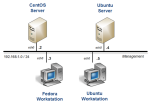

This work by the National Information Security and Geospatial Technologies Consortium (NISGTC), and except where otherwise noted, is licensed under the Creative Commons Attribution 3.0 Unported License.
Development was funded by the Department of Labor (DOL) Trade Adjustment Assistance Community College and Career Training (TAACCCT) Grant No. TC-22525-11-60-A-48; The National Information Security, Geospatial Technologies Consortium (NISGTC) is an entity of Collin College of Texas, Bellevue College of Washington, Bunker Hill Community College of Massachusetts, Del Mar College of Texas, Moraine Valley Community College of Illinois, Rio Salado College of Arizona, and Salt Lake Community College of Utah.
This workforce solution was funded by a grant awarded by the U.S. Department of Labor's Employment and Training Administration. The solution was created by the grantee and does not necessarily reflect the official position of the U.S. Department of Labor. The Department of Labor makes no guarantees, warranties or assurances of any kind, express or implied, with respect to such information, including any information on linked sites, and including, but not limited to accuracy of the information or its completeness, timeliness, usefulness, adequacy, continued availability or ownership.
Please review the content-specific requirements for Linux+ labs.
Linux+ Series 1 labs are supported using 2 topologies, the NETLAB+ Linux+ Base Pod and the Linux+ Install Pod. The pod required for each lab is indicated in the table below.


| Lab | Title | Linux+ Domain | Pod Required | Tasks Included |
|---|---|---|---|---|
| 1a | CentOS Server Linux Installation | Linux Installation and Package Management | Linux+ Install |
|
| 1b | Ubuntu Desktop Linux Installation | Linux Installation and Package Management | Linux+ Install |
|
| 2 | Installing Packages and Shared Libraries on Fedora and Ubuntu | Linux Installation and Package Management | Linux+ Base |
|
| 3 | Displaying Hardware | System Architecture | Linux+ Base |
|
| 4 | Adding a New Partition | Devices, Linux Filesystems, Filesystems Hierarchy Standard | Linux+ Base |
|
| 5 | Creating filesystem Quotas | Devices, Linux Filesystems, Filesystems Hierarchy Standard | Linux+ Base |
|
| 6 | Booting and Restarting the System | System Architecture | Linux+ Base |
|
| 7a | Using the BASH Shell | GNU and UNIX Commands | Linux+ Base |
|
| 7b | Using the BASH Shell | GNU and UNIX Commands | Linux+ Base |
|
| 7c | Using the BASH Shell | GNU and UNIX Commands | Linux+ Base |
|
| 7d | Using the BASH Shell | GNU and UNIX Commands | Linux+ Base |
|
| 8 | Monitoring Processes | GNU and UNIX Commands | Linux+ Base |
|
| 9 | Working with Files | Devices, Linux Filesystems, Filesystems Hierarchy Standard | Linux+ Base |
|
| 10a | Managing Text Files | GNU and UNIX Commands | Linux+ Base |
|
| 10b | Managing Text Files | GNU and UNIX Commands | Linux+ Base |
|
| 10c | Managing Text Files | GNU and UNIX Commands | Linux+ Base |
|